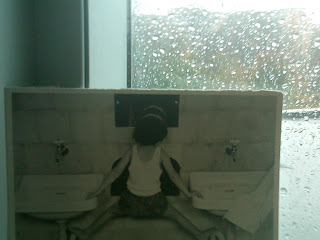"Now worry about how this emerges from mouths
and pages. Fret on the exact order and precision.
There is still blood, bones and ash on the
move. Restless and subterranean vowels,
eye contact, what isn’t said and the position
of the speaker
behind the curtain—these
spin the coin of our children-- round
sweet faces--
on a distant table.
If we stutter or drift, something terrifying
settles upon the sentence: poetry perhaps,
demanding doubt, confusion, an apprehension
of meaning that refuses to be spoken."
(me in "The Grammar of Panic" from Working in the Emptiness)
"Every ancester sleeps in our moving bodies,
mine, yours, all of us descendants...
...bulbs,
laid them gently into their cold grave socks, singing
hyacinth, tulip, narcissus, crocus. They're dumb
as bits of coal
and descending inward. Descendant. This trap door
we drop down every day, waking, say,
to no apparent history
but a simple room: edge of windown, a shirt
flung over a high-backed chair, the absent, usual coming
of winter light." (Marianne Boruch, "Thanksgiving" in Descendant)














